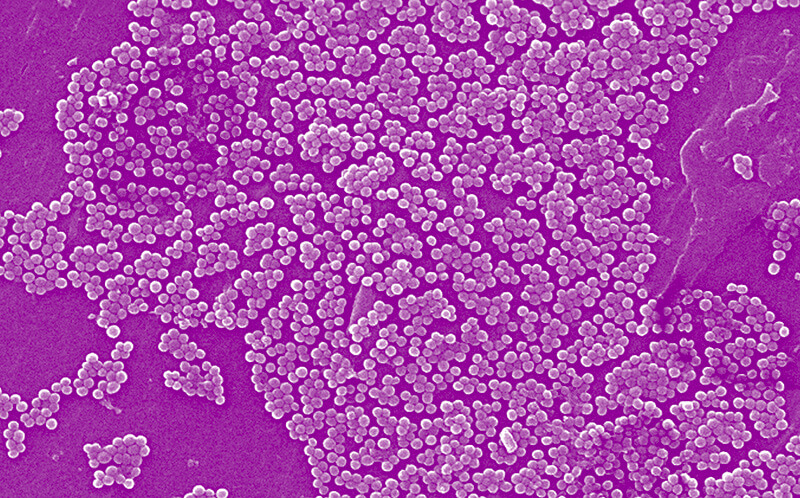 Antibiotic resistance continues to be a growing concern, and individuals with rosacea can do their part to protect this important class of disease-fighting drugs.
Antibiotic resistance continues to be a growing concern, and individuals with rosacea can do their part to protect this important class of disease-fighting drugs.
The U.S. Centers for Disease Control (CDC) estimates that Americans contract more than 2.8 million infections caused by superbugs — antibiotic-resistant strains of bacteria — each year, and at least 35,000 people die as a result. In addition, a study recently published in Lancet estimates that number to be almost 1.3 million globally.1 The World Health Organization warns that if no action is taken, drug-resistant diseases could cause 10 million deaths yearly worldwide by 2050.2 In addition, the WHO noted that some common diseases have become increasingly difficult to treat, including respiratory and urinary tract infections and sexually transmitted diseases; life-saving medical procedures are becoming riskier; and our food systems are increasingly threatened.2
Antibiotic resistance occurs when disease-causing bacteria, like other organisms, adapt to their environment, evolving so that they become unresponsive to the antibiotic agents used to eradicate them. Fortunately, a subantimicrobial formulation of oral doxycycline has been developed to avoid this response in treating rosacea, according to a recent review article in the Journal of Clinical and Aesthetic Dermatology.3
“When treating its signs and symptoms, antibiotics prescribed for rosacea may often operate ‘under the radar’ in terms of impacting bacteria,” said Dr. James Del Rosso, adjunct clinical professor of dermatology at Touro University College of Osteopathic Medicine and one of the authors. “Rather than destroying disease-causing microorganisms, in rosacea these therapies have been used for their anti-inflammatory properties, quelling rosacea’s signs and symptoms through a variety of pathways.”
Rosacea is now understood as a single disease with a wide variety of potential presentations, called phenotypes, and though these may appear at different times and in varying combinations, scientific research indicates they may all be linked to an underlying inflammatory continuum. Rosacea’s diverse manifestations are the result of a cascade of events along different inflammatory pathways, the authors observed, and antibiotics may often eliminate its signs and symptoms by inhibiting these processes.
Dr. Del Rosso noted that the low subantimicrobial dosage of oral doxycycline, which is widely prescribed in higher dosages as an antibiotic, has been approved by the FDA specifically for rosacea. This non-antibiotic formulation releases 30 mg of the therapy immediately and 10 mg in a delayed dose to allow avoidance of antibiotic resistance, and has been shown to significantly reduce the relapse rate and lesion counts in patients with moderate to severe inflammatory rosacea.4
“It’s important that we physicians and our patients avoid the unnecessary use of antibiotics in order to do our part to keep them effective,” said Dr. Del Rosso. He noted that subantimicrobial oral doxycycline is now well accepted for the long-term management of rosacea. In addition, topical medications for rosacea deliver therapy directly to the affected areas with negligible exposure throughout the body.5
“Antibiotic resistance is not a new story, but it’s critical not to overlook its insidious effects,” Dr. Del Rosso said. “It’s more important than ever for rosacea patients to use therapies appropriately and as prescribed.”
In addition to the CDC and the WHO, information on managing antibiotic resistance can be found at SaveAntibiotics.org and Pew Charitable Trusts, a global research and public policy organization leading an initiative to protect Americans against a future without effective antibiotics.
References:
1. Antimicrobial Resistance Collaborators. Global burden of bacterial antimicrobial resistance in 2019: a systematic analysis. Lancet 2022 Feb 12;399(10325):629-655. doi: 10.1016/S0140-6736(21)02724-0. Epub 2022 Jan 19.
2. World Health Organization. New report calls for urgent action to avert antimicrobial resistance crisis. Accessed on March 10, 2022.
3. Del Rosso JQ, Webster G, Weiss JS, Bhatia ND, Stein Gold L, Kircik L. Nonantibiotic properties of tetracyclines in rosacea and their clinical implications. J Clin Aesthet Dermatol 2021;14(8):14–21.
4. Del Rosso JQ, Brantman S, Baldwin H. Long-term inflammatory rosacea management with subantibiotic dose oral doxycycline 40 mg modified-release capsules once daily. Dermatologic Ther 2021; e15180. doi:10.1111/dth.15180.
5. Thiboutot D, Anderson R, Cook-Bolden F, et al. Standard management options for rosacea: the 2019 update by the National Rosacea Society Expert Committee. J Am Acad Dermatol 2020;82(6):1501–1510. doi:10.1016/j.jaad.2020.01.077